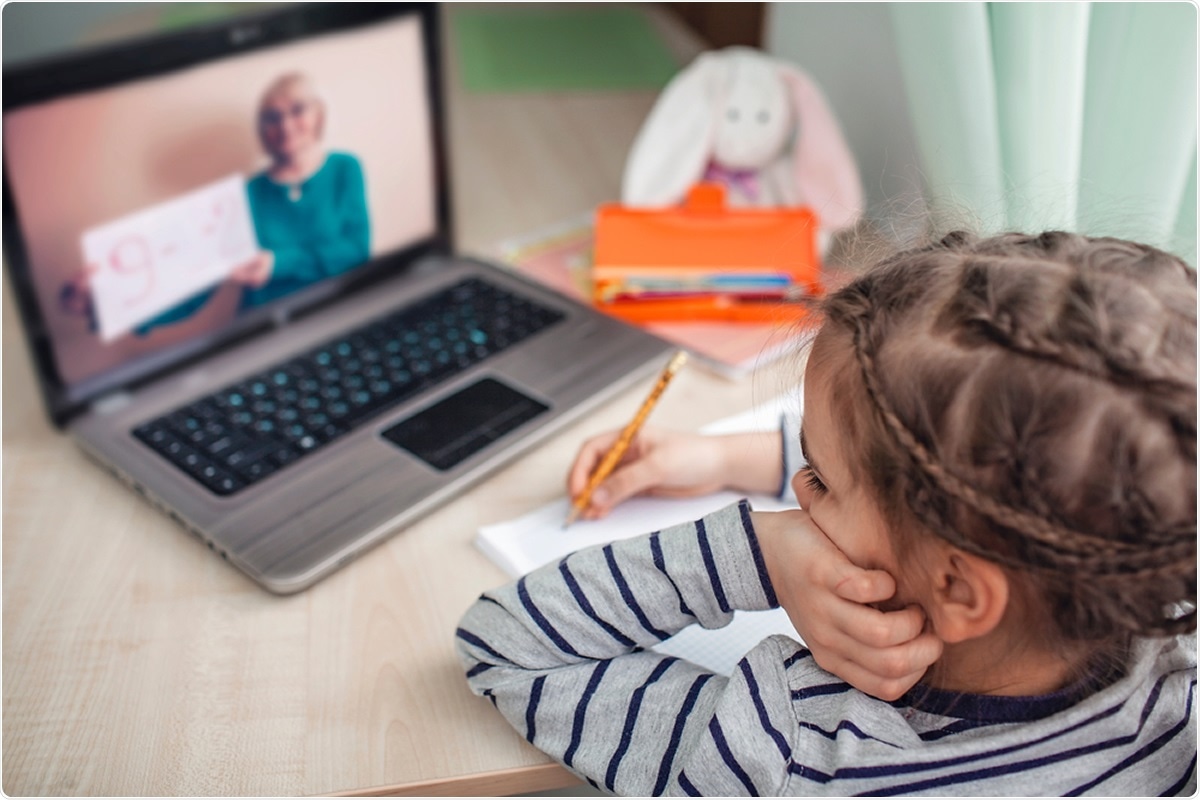The coronavirus disease (COVID-19), caused by the severe acute respiratory syndrome coronavirus 2 (SARS-CoV-2), continues to spread worldwide. To date, more than 112.5 million people have been infected, with over 2.49 million deaths lost to COVID-19.
The United States is one of the countries hardest hit by the pandemic, with the number of infections skyrocketing to 28.34 million. Due to the pandemic's impact, many countries went into lockdown, where schools were closed, and online learning replaced the classroom.
Over the past months, schools and universities allowed face-to-face classes provided that students undergo a 14-day quarantine period if they were exposed to a SARS-CoV-2 case.

CDC guideline
Recently, the U.S. Centers for Disease Control and Prevention (CDC) updated its guideline. Based on local circumstances and resources, quarantine can end after day 10 without testing and if no symptoms have been reported.
Data indicated that the incubation period for SARS-CoV-2 infection is between four and five days from exposure in adults and six to seven days from exposure in children. As a result, Alachua County in Florida implemented SARS-CoV-2 testing on day 9 and a return to school on day 10 for students with contacts of confirmed COVOD-19 cases.
Researchers at the University of Florida and the Florida Department of Health evaluated test positivity rates for SARS-CoV-2 infection among student contacts. The team found that nine days are not enough to ascertain that the student did not contract the virus.
The study
To arrive at the study findings, published in the journal JAMA Network, the researchers asked informed consent from the parents of 26,456 children from kindergarten through 12th grade.
Of these students, 49 percent were enrolled for in-person instruction, where they are required to attend physical classes. The county's health department provided reverse transcriptase-polymerase chain reaction (RT-PCR) tests for the students who came back from quarantine.
The health department also conducted swabs for symptomatic students and contact tracing for COVID-19-positive confirmed cases.
Student contacts of confirmed cases were quarantined and subjected to RT-CR test on the third day and day 9. In some cases, testing was delayed to 10 to 14 days. The students without symptoms and tested negative on days 9 to 14 could return to school on the day after a negative test. If no testing occurred, a 14-day quarantine was required.
Students who returned to school after a negative test were monitored for COVID-19 symptoms until day 14.
Study findings
Study findings showed that from August 1 to November 30, 2020, the positivity rate of Alachua County was 4.9 percent. During this time, 495 suspected student cases underwent testing. Of these, 51.9 percent tested positive for COVID-19. For these confirmed cases, 2,189 contacts underwent quarantine and isolation.
Further, 143 contacts were tested on day 3, while 839 contacts were tested on days 9 to 14. Of the student contacts who were tested on the third day, 10.4 percent were positive for SARS-CoV-2. Meanwhile, 40 contacts tested positive for COVID-19 on days 9 to 14.
Among the 799 contacts of confirmed COVID-19 cases with a negative test result on days 9 to 14, only one student became symptomatic after returning to school and tested positive on day 14, after testing negative on day 9. However, the virus isolated from the student is genetically distinct from the virus taken from the COVID-19 cases to which the student was exposed to.
The researchers concluded that had students returned to school before day 14 without testing on day 9 or thereafter, about 8.2 percent of high school contacts would have returned to school with COVID-19.
The study results should be considered when evaluating the CDC recommendation for a 10-day quarantine period without testing or a 7-day quarantine with testing.
However, the team also revealed no evidence that an earlier school return with a negative test result was tied to a subsequent symptomatic illness.
Since the quarantine length for close contacts is still unclear, it is still crucial to observe infection control measures. These include washing the hands regularly, practicing social distancing, wearing face masks, and avoiding crowded places.
- Nelson, E., McKune, S., Ryan, K. et al. (2021). SARS-CoV-2 Positivity on or After 9 Days Among Quarantined Student Contacts of Confirmed Cases. JAMA Network. https://jamanetwork.com/journals/jama/fullarticle/2776857
Posted in: Child Health News | Medical Research News | Disease/Infection News
Tags: Children, Coronavirus, Coronavirus Disease COVID-19, Infection Control, Pandemic, Polymerase, Polymerase Chain Reaction, Research, Respiratory, Reverse Transcriptase, SARS, SARS-CoV-2, Severe Acute Respiratory, Severe Acute Respiratory Syndrome, students, Syndrome, Virus

Written by
Angela Betsaida B. Laguipo
Angela is a nurse by profession and a writer by heart. She graduated with honors (Cum Laude) for her Bachelor of Nursing degree at the University of Baguio, Philippines. She is currently completing her Master's Degree where she specialized in Maternal and Child Nursing and worked as a clinical instructor and educator in the School of Nursing at the University of Baguio.
Source: Read Full Article
